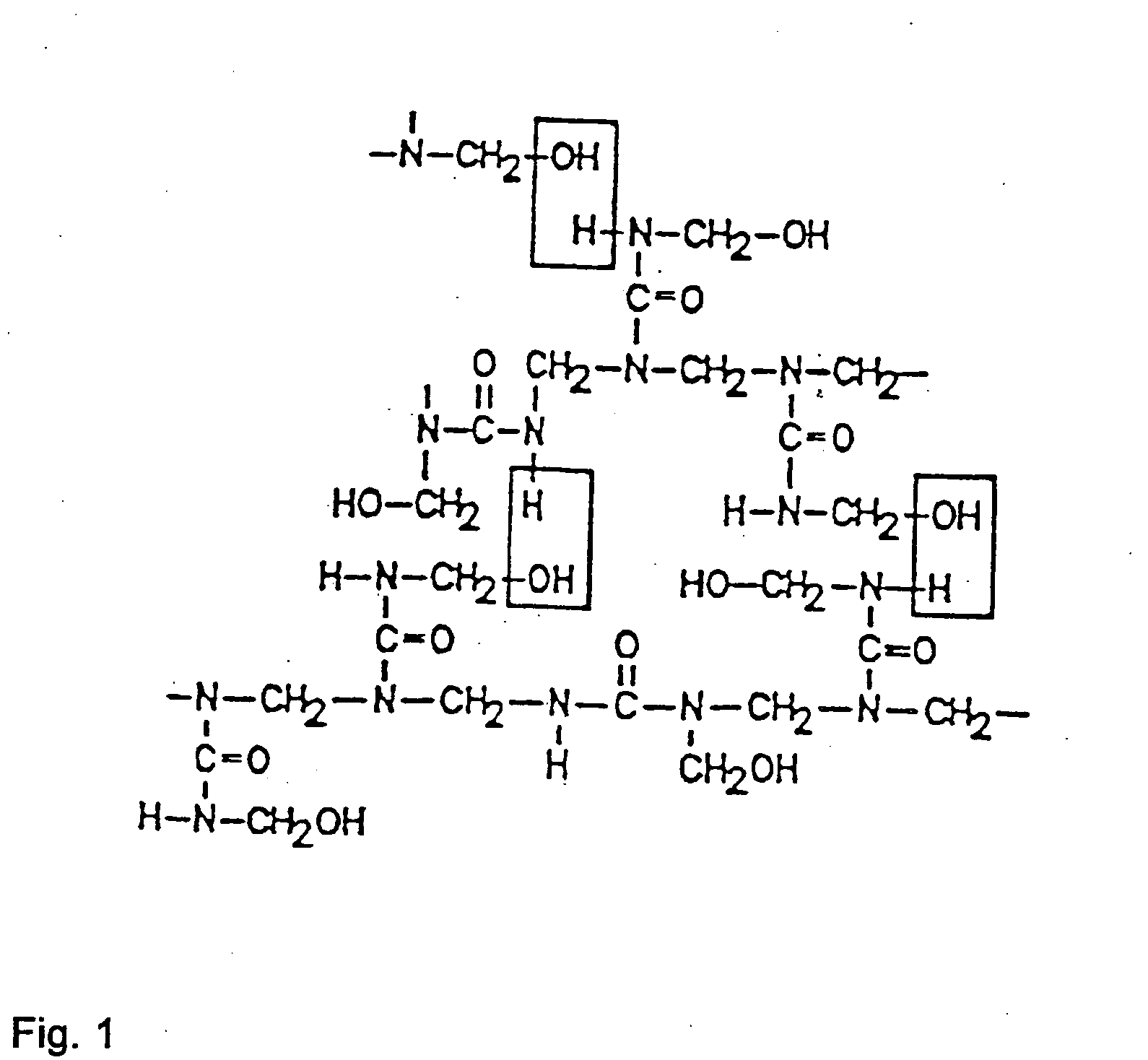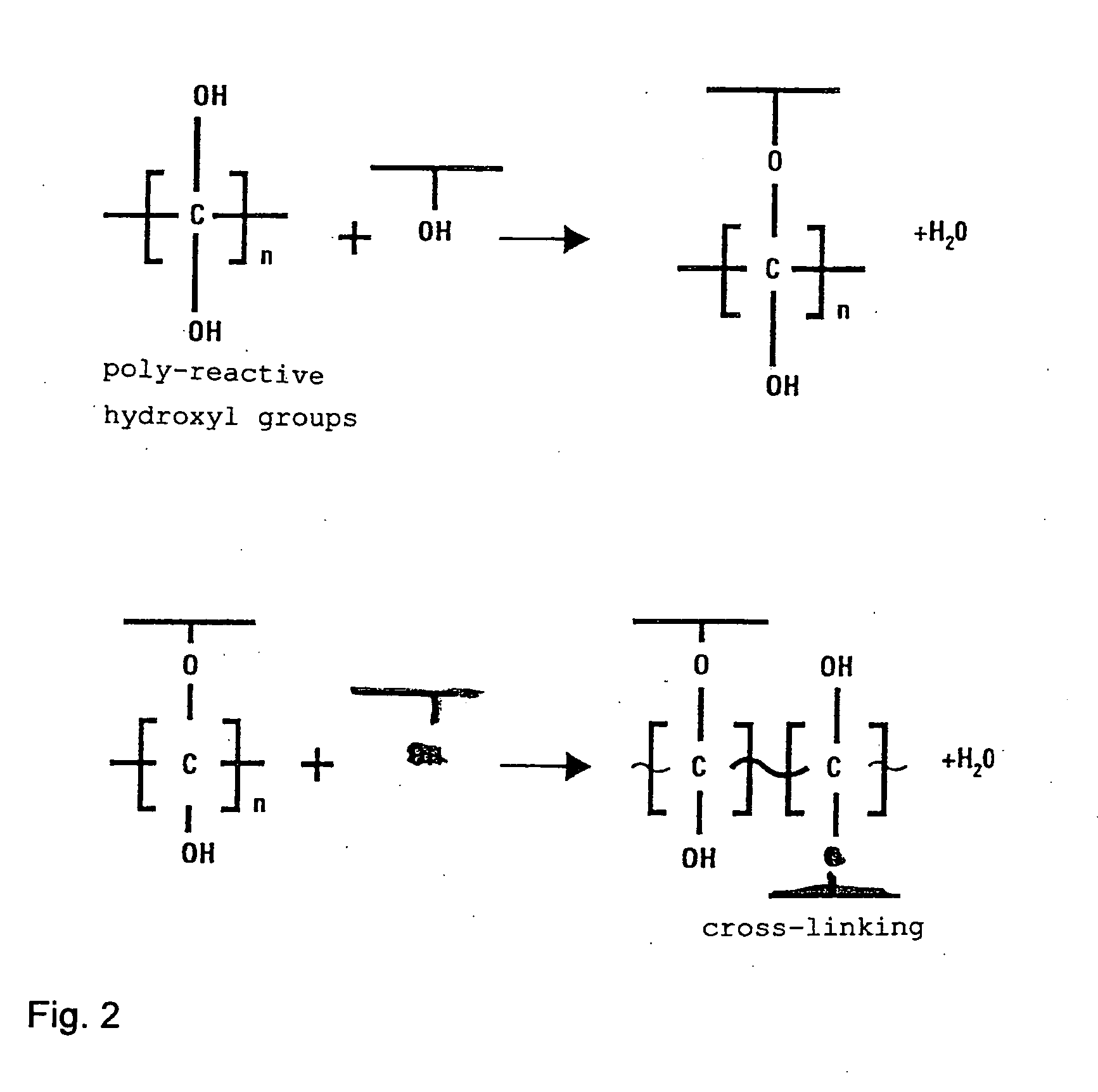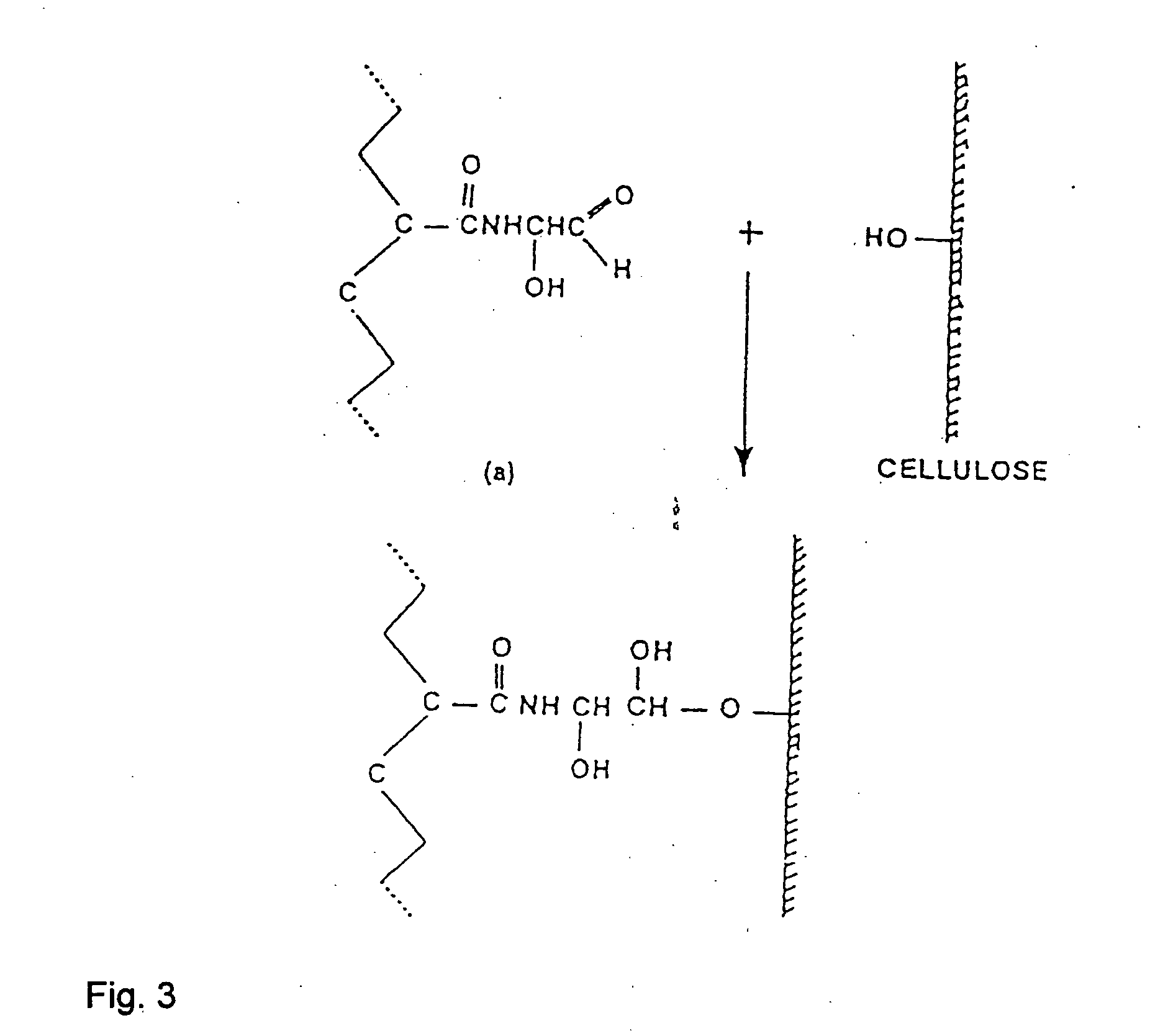Multifunctionally usable coating dispersion for printing substrates
a printing substrate and multifunctional technology, applied in the field of coating printing substrate coating dispersion, can solve the problems of reducing the area weight of the paper with increasing production speed, increasing the cost, and not being able to meet the conventional finishing procedure or the cost of increasing the cost, etc., and achieves high ap content, high machine speed, and low cost.
- Summary
- Abstract
- Description
- Claims
- Application Information
AI Technical Summary
Benefits of technology
Problems solved by technology
Method used
Image
Examples
embodiment 1
Production of a Thin Coat Paper With Alkali Activated Bentonite of Various Delamination Without Any Binding Agent.
[0182] Since the offset capability of a coated thin coat paper is the base for other coated papers, such as inkjet, flexoprinting, or self-inking paper, an offset printing evaluation of the various alkali activated bentonites without any binding agent was initially performed.
[0183] A 48 g / m2 wood-containing, non-sized LWC coating base paper, as well as a 48 g / m2 LWC coating base paper produced from 100% recycled paper, was used as the base paper.
[0184] For the production and delamination of the bentonite slurry (products of Süd Chemie, Munich) a high-performance dispersing device was used. The following bentonites were utilized: Printosil, Lightcoat, and Optigel. These products are described in detail in the product description issued by Süd-Chemie, Munich.
[0185] For the purpose of supporting the delamination, as well as for increasing the solid content, 0.2% of dis...
embodiment 2
[0195] Embodiment 2 relates to the production of a thin coat paper with alkali activated bentonite of various delamination with low amounts of binding agent.
[0196] In this test run PVAl (Mowiol 3-85), manufacturer KUARAI), cationed PVAl (Mowiol 3-85), and for digestion 6 parts of Poly-DADMAC (PolyQuad, manufacturer Kaptol-Chemie) were added. Furthermore, anionic starch (Perfectamyl A 4692, manufacturer AVEBE) was used as the binding agent. (Solid content of PVAl 30%, cationed PVAl 27%, and of the starch 25.5%).
[0197] For the dissolving of the PVA, as well as for the starch digestion, an automatic laboratory digester was used. The dispersion of the pigments was performed in a high-shear dispersing device (laboratory disperser with tooth wheel). For the mixing of the individual components, a laboratory mixer with propeller stirrer was used, whereas the methods stated in embodiment 1 were used for the measuring of the rheological properties.
[0198] As the pigments, Printosil and Ligh...
embodiment 3
[0217] Embodiment 3 refers to the use of wet strength agents (cross-linking agents) for improving the offset capability of thin coat paper.
[0218] The surface of coated paper and paperboard often comes into contact with water. For example, offset paper is exposed to moist water in the printing machine. Packaging paper is also exposed to moisture or wetness during transport. With specialty paper, such as coated inkjet paper, a certain wet strength resistance of the coat is also demanded.
[0219] In coats containing water soluble binding agents, the use also of additives, such as wet strength agents, can hardly be avoided. The effect of these products based in part on—as already described—cross-linking reactions with the water soluble binding agents in order to increase the wet strength resistance, which, however, do not contribute to the binding strength.
[0220] In this test run it was examined, whether wet strength agents are capable of entering into cross-linking reactions with the ...
PUM
| Property | Measurement | Unit |
|---|---|---|
| pH | aaaaa | aaaaa |
| pH | aaaaa | aaaaa |
| pH | aaaaa | aaaaa |
Abstract
Description
Claims
Application Information
 Login to View More
Login to View More - R&D
- Intellectual Property
- Life Sciences
- Materials
- Tech Scout
- Unparalleled Data Quality
- Higher Quality Content
- 60% Fewer Hallucinations
Browse by: Latest US Patents, China's latest patents, Technical Efficacy Thesaurus, Application Domain, Technology Topic, Popular Technical Reports.
© 2025 PatSnap. All rights reserved.Legal|Privacy policy|Modern Slavery Act Transparency Statement|Sitemap|About US| Contact US: help@patsnap.com



